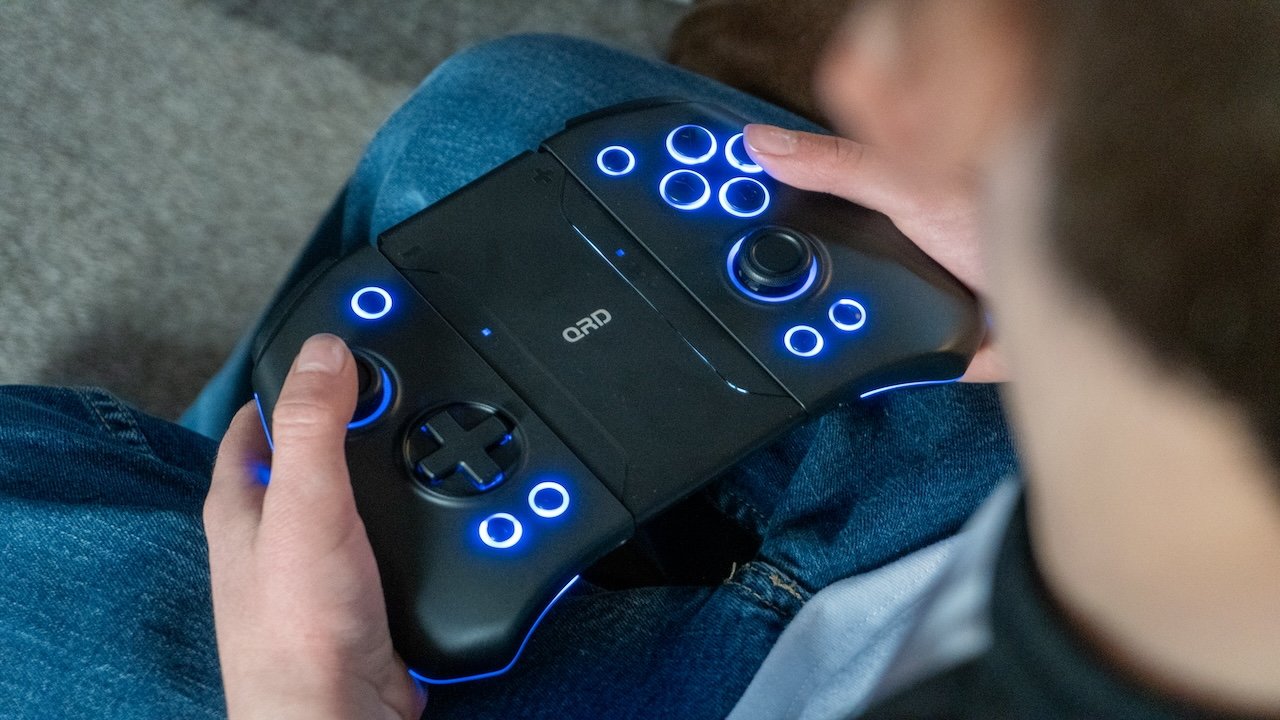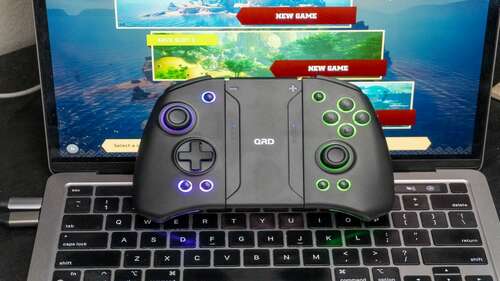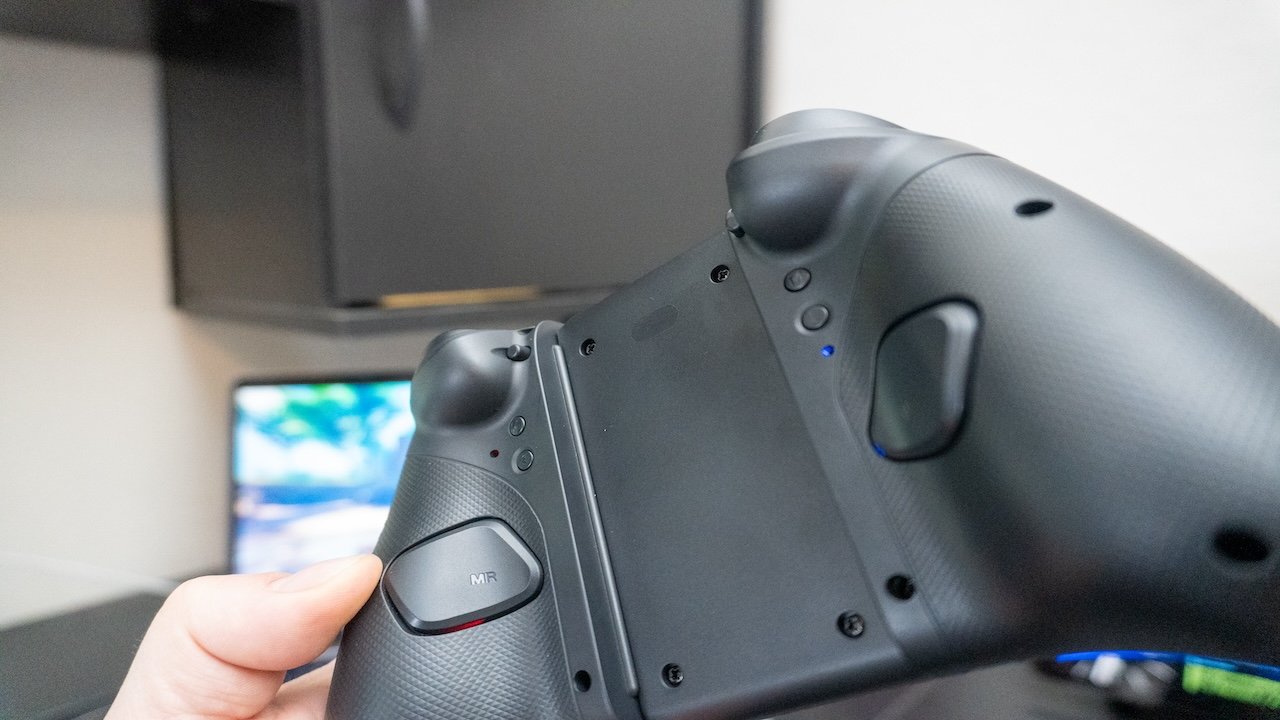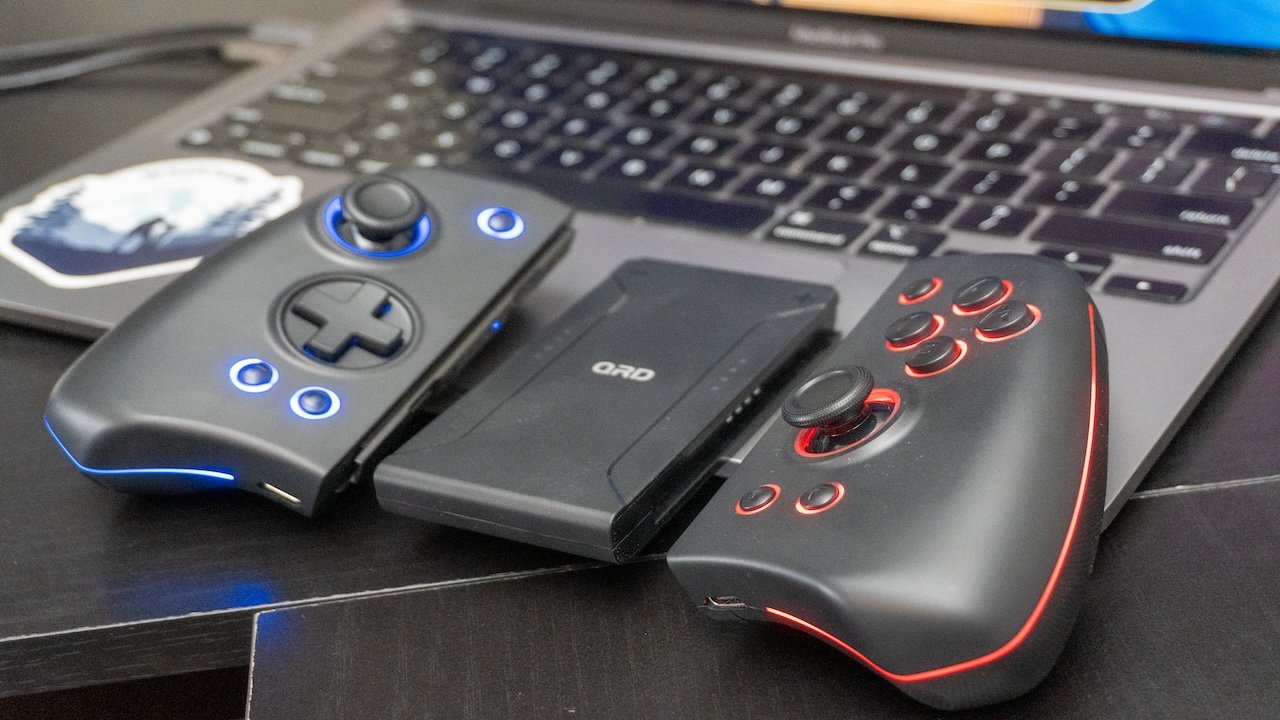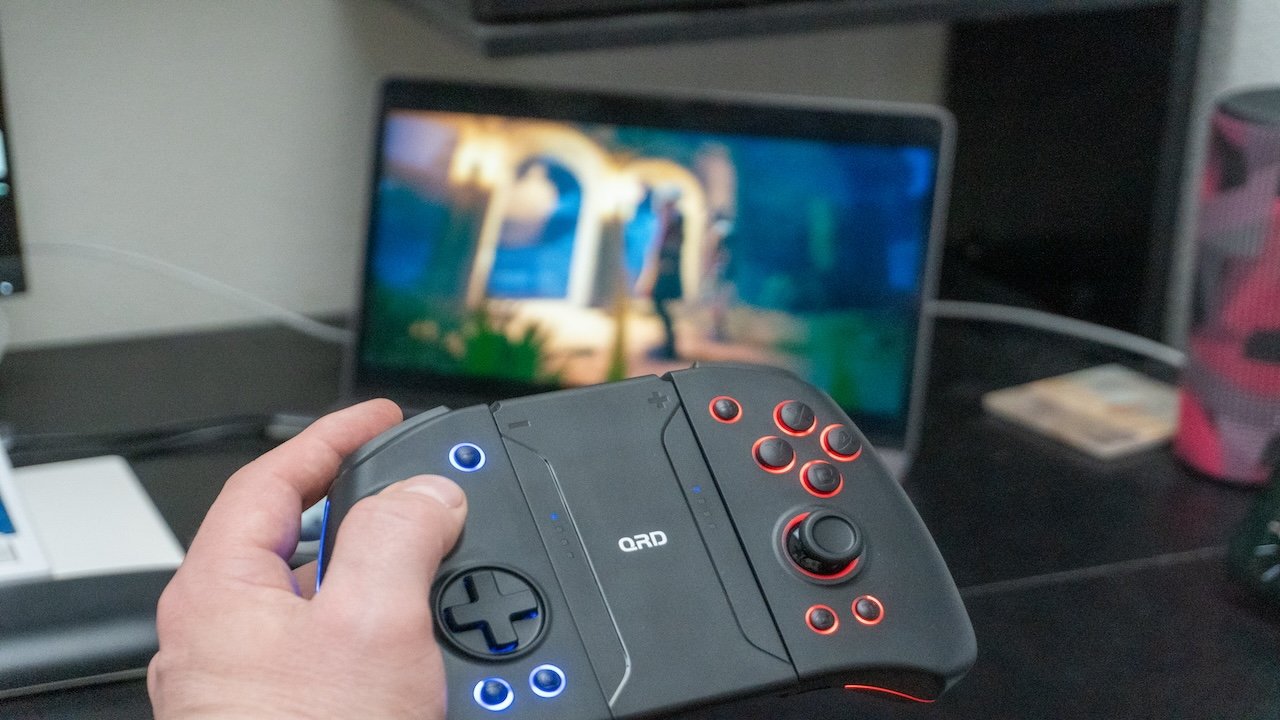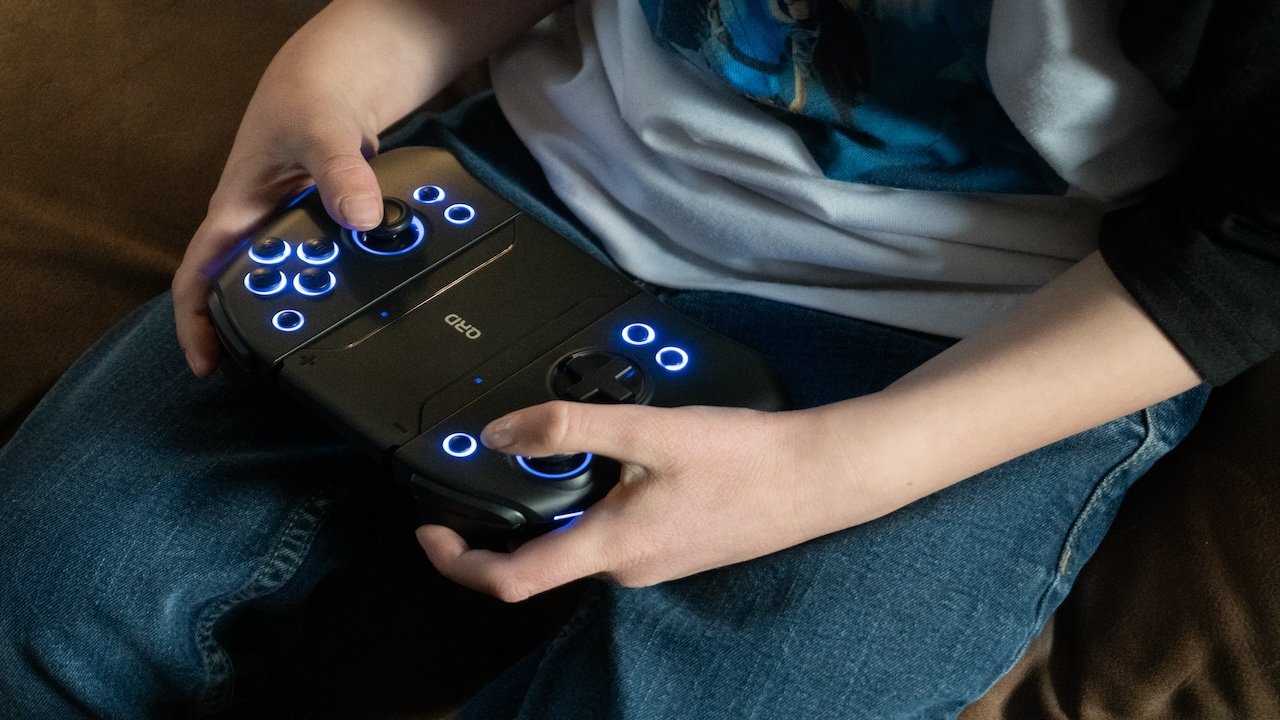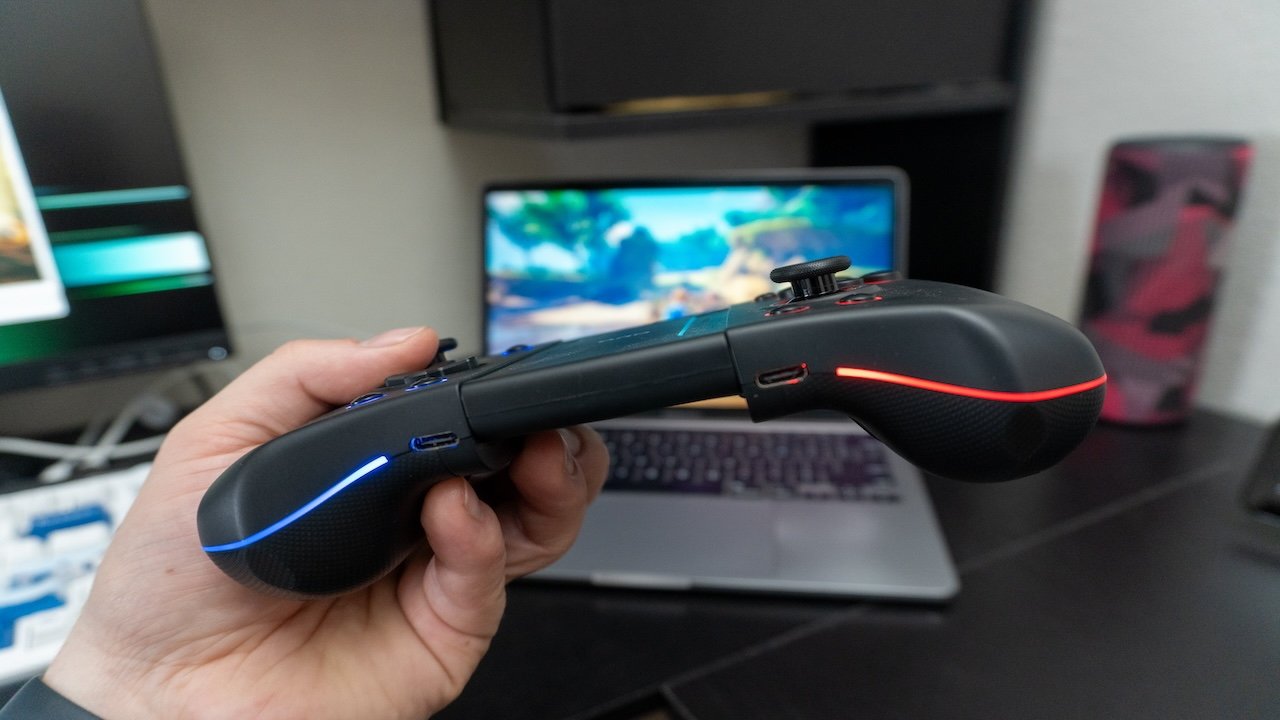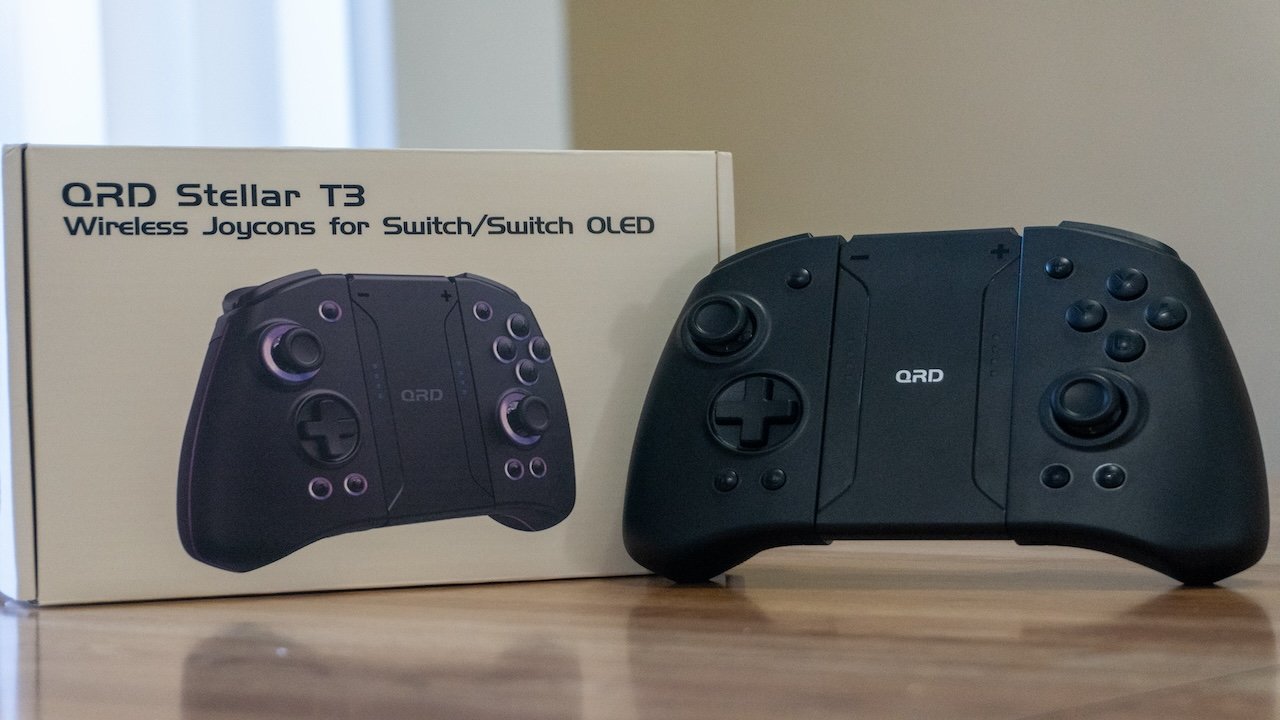The QRD Stellar T3 is more affordable than other controller options and offers gamers greater precision with Hall effect joysticks, button mapping, and additional button options.
With the introduction of Bluetooth controller support, the promise of more gaming-centric hardware, and a growing Apple Arcade library, Apple fans are looking for a controller that works with their devices. The QRD Stellar T3 is a compelling option because of its functionality and LED color lighting.
Although marketed as a Nintendo Switch and Switch OLED controller, the Bluetooth connectivity allows Apple users to pair the T3 with a Mac, iPad, iPhone, and Apple TV. Gamers can use the T3 when playing controller-supported games from the Apple Arcade or standalone downloaded titles like Stray.
QRD Stellar T3 review – unboxing, design and initial impressions
Upon taking the Stellar T3 controller out of the box, the first thought is about how large the controller is in size. Compared with the traditional Joycon controllers from the Nintendo Switch, the T3 looks like a giant.
Even contrasted with more robust controllers, like those from Playstation or Xbox, the T3 feels more bulky than others. Some gamers with smaller hands will notice the substantial footprint, but moving around the buttons is easy enough, even for a seven-year-old.
QRD’s Stellar T3 comes in a matte black color, and each side of the controller detaches from a central unifying piece, much like the standard Switch Joycons. The option to separate the controllers gives users the ability to enjoy couch co-op without requiring a second dedicated controller.
The center connector piece is just molded plastic with no charging ports or other dedicated features. Additionally, the T3 as a whole has the standard button layout, including a D-pad, two Hall-effect joysticks, ABXY buttons, R, L, ZR, ZL, +, -, home, and Bluetooth connect buttons.
In addition to the standard layout, the T3 also has ML, MR, 2x turbo buttons, 2x micro buttons, 2x SL and SR buttons, and 2x vibrate control buttons. Each controller half also has a USB-C charging port.
The additional buttons expand in-game capabilities, and a six-axis gyro also promises even more flexibility when using the T3. Initial button clicks are responsive and the joysticks feel fluid, which promises an enjoyable gaming experience.
Aside from the larger size, the QRD Stellar T3 feels more lightweight than other controllers. The plastic housing and feature-less connector piece reduce weight, which could be good for long sessions, but also makes it feel cheap.
QRD Stellar T3 review – pairing, button-mapping, and first use
QRD markets the Stellar T3 as a Switch and Switch OLED controller, but the Bluetooth capability means users can connect it to a Mac, iPhone, or iPad. Unfortunately, users must connect each half of the T3 to their Apple device before using it.
Connecting the Stellar T3 is simple enough despite needing to pair twice. Slide each half out of the connector middle piece and hold the Bluetooth button. Once your device recognizes the controller Joy-Con (L/R), you can complete the connection.
Throughout testing, we used the Stellar T3 with our MacBook Pro, and after connecting, you can re-map the buttons in settings. What is more useful is that you can create custom profiles and controller maps based on the games you frequently play.
The re-mapping capability is one of the most attractive features available on the Stellar T3. Plus, the turbo button adds the invaluable ability to simulate rapidly repeated button presses, which is handy for fighting games or classics.
After connecting the QRD Stellar T3 to our MacBook Pro, it was time to download a couple of games to run the controller through its paces. Luckily, Apple Arcade has a vast library of video games to choose from, thanks to the company’s increased commitment to games.
Using the controller for the first time takes some getting used to, especially since the T3 is more sensitive than the older controllers we’re used to. In particular, the T3 uses Hall effect joysticks, which use magnetic fields to recognize inputs instead of electric resistance for more precise recognition.
The Hall effect makes gaming more accurate, and after settling into a gaming session, we found the sensitivity beneficial, especially for FPS games. Likewise, having additional input buttons, like the MR and ML buttons, gave us more options to swap out weapons and spells in RPG games.
Although handy, these buttons, located on the back of the controllers, can get pressed accidentally, causing unwanted game actions. However, with a grip adjustment, you can sort of avoid these accidental inputs.
The detachable controller halves are also handy for unconventional gaming postures. Yet we found ourselves using it connected in the traditional configuration, as it felt more stable as a single unit.
QRD Stellar T3 review – LED lights, charging, and reconnecting
A standout feature of the QRD Stellar T3 is every gamer’s favorite— LED lighting. The T3 features a consistent, bright LED spectrum that gamers can cycle through with colors including blue, green, red, purple, yellow, orange, and white.
Monochrome colors are just the beginning, as the Stellar T3 also features a breathing color option. The T3 offers gamers a multi-color breathing sweep option or a monochromatic symphony mode.
QRD’s Stellar T3 also lets users change the brightness level, which helps save eyeballs in the dark and battery life. Plus, those who don’t want the lights on don’t have to because the controller lets you turn them off.
The Stellar T3 has a 500mAh battery in each half of the controller. That means, depending on settings like LED brightness and mode, vibration settings, and turbo functions, users have at least a couple of hours of wireless gaming before needing to recharge.
That’s where things get a little awkward. The QRD Stellar T3 is primarily a Nintendo Switch controller, meaning each Joy-Con charges when connected to the console. However, when using it with an Apple device, like our MacBook Pro, we had to charge another way.
Each Joy-Con has a USB-C port at the bottom, allowing users to charge the controllers without the need for a Switch console. Nevertheless, both Joy-Cons (controller half) require separate charging, which is rather inconvenient for Apple users.
We wish the middle connector could accept a single USB-C input that shares the charge between each Joy-Con. That would allow us to continue gaming without worrying about one of the controller halves dying on us mid-session.
Despite the charging drawback, when you do come back to the Stellar T3, reconnecting it to a MacBook or iPad is straightforward. Simply wake the controller with the “home” button and reconnect the T3 in the Bluetooth settings menu.
QRD Stellar T3 review – a pro-level alternative to name-brand controllers
We used the QRD Stellar T3 for several gaming sessions and enjoyed using it each time. Although the controller is on the large side, it wasn’t uncomfortable for extended gaming, even if the ML/MR buttons occasionally were in the way.
The Stellar T3 offers button-mapping capabilities, which becomes useful for more advanced gaming. Likewise, the turbo feature is quite possibly our new favorite controller function, especially as we revisit the classics.
The LED colors are also another exciting feature, adding ambiance to our gaming. Despite all the good the QRD Stellar T3 offers, its biggest flaw is the charging.
There is a glaring missed opportunity in having the center connector piece support charging for the entire unit, even if separate ports mean independent charging for each Joy-Con. Furthermore, despite its size, the T3 feels rather lightweight, which could make some users feel like it’s cheaper in quality.
Overall, the QRD Stellar T3 provides an enjoyable gaming experience, and its capabilities outweigh its flaws.
The T3 is also more affordable than name-brand controllers from Xbox or Playstation at $58.99, especially with the added buttons and mapping capability, which are typically reserved for pro-level controllers that cost even more.
QRD Stellar T3 — Pros
- Simple button-mapping capability
- LED lights with control options
- Accurate joysticks and button input
- More affordable than name-brand controllers
QRD Stellar T3 — Cons
- A bit bulky
- Requires separate charging unless using Nintendo Switch
- Lightweight plastic feels cheap
Rating: 4 out of 5
Where to buy the QRD Stellar T3
